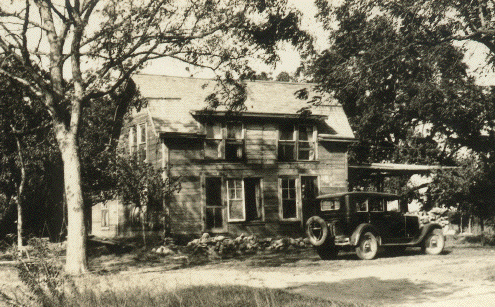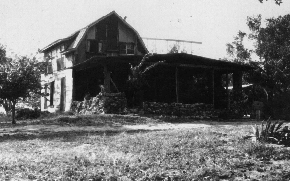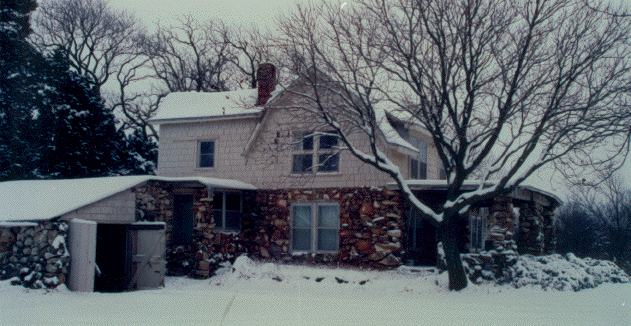

Mom was in second grade when the old house burned to the ground in 1917. She and her sister, then in sixth grade, walked home for lunch and found their brothers tryng to save the house. Mom was afraid her mother was trapped inside, but fortunately Grandma was visiting a neighbor and nobody was hurt.
 |
 |
Over a period of twenty-one years, from 1918 to 1939, my grandfather built the "new" house. Being an old nineteenth century farmer, used to making do with the materials available, he built the place with a lot of used lumber, some of it still containing square cut nails from its first use before 1890. The house was not built from a master plan. It was an ad hoc project, constructed a piece at a time, made up along the way. The result was a unique house that became something of a local landmark. Many times, when I tell people where I live, the response is, "Oh yes, I know that house."
 |
 |
One distinctive feature of the place is the stonework on the downstairs walls. The old man collected rocks from all over the county and down into Oklahoma, many of them containing fossils of ancient sea creatures.

Fast forward sixty-five years. All of those who were kids in the house are now gone, and even some of the next generation have left us. But many of us surviving cousins who grew up with Grandma and our aunts living here still love the old place.
Recently one of my cousins was visiting, and asked me where I had sold the fossils. I had no idea what she was talking about until she took me around to the front of the house and showed me where somebody apparently had come up onto the front porch with a hammer and chisel, and chipped off every fossil he could find.
Practically speaking, this vandalism did me no harm. My health wasn't damaged, and the crime didn't cost me any money. But I still have to wonder how people get to be the kind of lowdown trash that would do such a thing.
I will probably never know who the vandal was, but I'm reminded of something I heard many years ago from the late radio psychiatrist, David Viscott. After a caller went on and on about what a rat some guy was, the doctor told her, "His punishment is to be who he is." It sounds like doubletalk at first, but the older I get the more I think it's true. No matter how much an evil person lies to the world and to himself that he's really OK, on some level, even if it's unconscious, he has to know what he has chosen to be, and that must give him a profound sense of self-disrespect. His punishment is to be who he is.
January 2, 2006